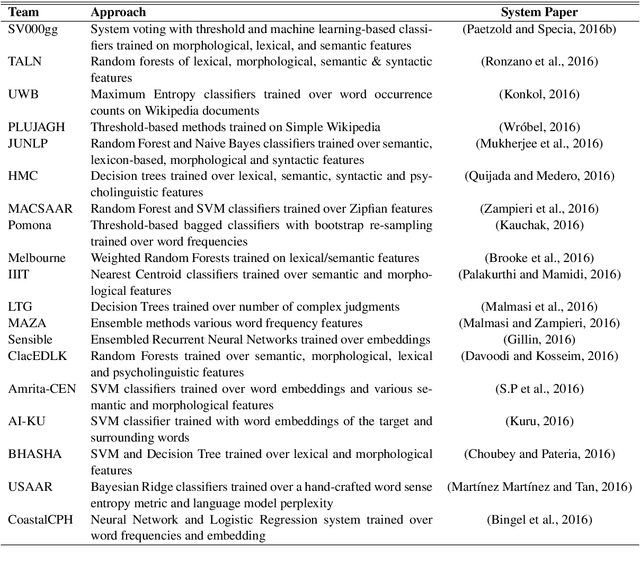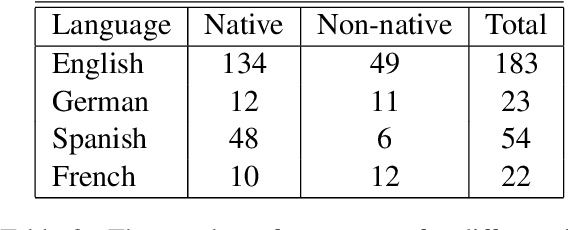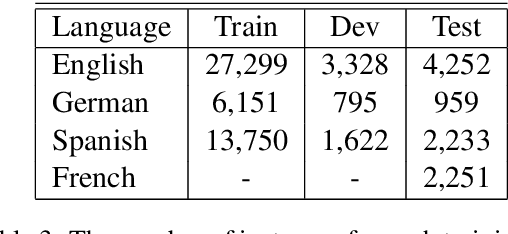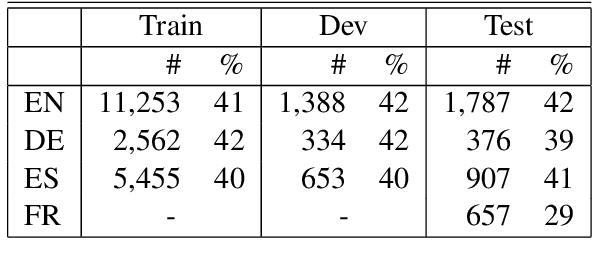Anaïs Tack
The BEA 2023 Shared Task on Generating AI Teacher Responses in Educational Dialogues
Jun 12, 2023Abstract:This paper describes the results of the first shared task on the generation of teacher responses in educational dialogues. The goal of the task was to benchmark the ability of generative language models to act as AI teachers, replying to a student in a teacher-student dialogue. Eight teams participated in the competition hosted on CodaLab. They experimented with a wide variety of state-of-the-art models, including Alpaca, Bloom, DialoGPT, DistilGPT-2, Flan-T5, GPT-2, GPT-3, GPT- 4, LLaMA, OPT-2.7B, and T5-base. Their submissions were automatically scored using BERTScore and DialogRPT metrics, and the top three among them were further manually evaluated in terms of pedagogical ability based on Tack and Piech (2022). The NAISTeacher system, which ranked first in both automated and human evaluation, generated responses with GPT-3.5 using an ensemble of prompts and a DialogRPT-based ranking of responses for given dialogue contexts. Despite the promising achievements of the participating teams, the results also highlight the need for evaluation metrics better suited to educational contexts.
The AI Teacher Test: Measuring the Pedagogical Ability of Blender and GPT-3 in Educational Dialogues
May 16, 2022



Abstract:How can we test whether state-of-the-art generative models, such as Blender and GPT-3, are good AI teachers, capable of replying to a student in an educational dialogue? Designing an AI teacher test is challenging: although evaluation methods are much-needed, there is no off-the-shelf solution to measuring pedagogical ability. This paper reports on a first attempt at an AI teacher test. We built a solution around the insight that you can run conversational agents in parallel to human teachers in real-world dialogues, simulate how different agents would respond to a student, and compare these counterpart responses in terms of three abilities: speak like a teacher, understand a student, help a student. Our method builds on the reliability of comparative judgments in education and uses a probabilistic model and Bayesian sampling to infer estimates of pedagogical ability. We find that, even though conversational agents (Blender in particular) perform well on conversational uptake, they are quantifiably worse than real teachers on several pedagogical dimensions, especially with regard to helpfulness (Blender: {\Delta} ability = -0.75; GPT-3: {\Delta} ability = -0.93).
A Report on the Complex Word Identification Shared Task 2018
Apr 24, 2018



Abstract:We report the findings of the second Complex Word Identification (CWI) shared task organized as part of the BEA workshop co-located with NAACL-HLT'2018. The second CWI shared task featured multilingual and multi-genre datasets divided into four tracks: English monolingual, German monolingual, Spanish monolingual, and a multilingual track with a French test set, and two tasks: binary classification and probabilistic classification. A total of 12 teams submitted their results in different task/track combinations and 11 of them wrote system description papers that are referred to in this report and appear in the BEA workshop proceedings.
 Add to Chrome
Add to Chrome Add to Firefox
Add to Firefox Add to Edge
Add to Edge